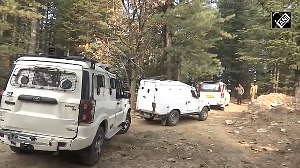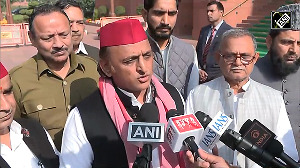Kerala, West Bengal, Puducherry slam the government’s decision to ban sale and purchase of cattle from animal markets for slaughter; meat traders fear spike in cow vigilantism, reports Aditi Phadnis.

The Opposition seems to have found a common plank in the ban on animal slaughter to rally against the central government, with some states even planning to move court against it.
Senior ministers in Kerala and West Bengal, ruled by traditional rivals the Left Front and the Trinamool Congress, respectively, have raised their voices in unison. Puducherry, which has a Congress government, has also slammed the Centre over the ban. Meat traders, too, have begun to lobby with various state governments to contest it, while political parties have expressed fears that the Centre’s move would only embolden cow vigilantes.
On Friday, the Union ministry of environment and forests banned the sale and purchase of cattle from animal markets for slaughter. This move is likely to hurt the buffalo meat export industry in the country, which has been in steady decline since 2014, when the National Democratic Alliance came to power.
In a Facebook post, Kerala Chief Minister Pinarayi Vijayan urged the people of the country to act against the “uncivilised decision” of the Centre and claimed it was an attempt to destroy the secular fabric of the country. His cabinet colleague and the state’s agriculture minister, V S Sunil Kumar, said, “This subject is in the state list; the Centre has interfered in this. This decision has got implications for the future. Cattle rearing will become very difficult. Who will take care of aged cattle?”
Another minister said the state government was planning to move court against the ban.
Beef fests were held in various parts of Kerala to protest the ban. Activists from the Left as well as the Congress-led United Democratic Front took out marches and hosted these fests where beef was consumed. The UDF will observe a “black day” on Monday.
A senior minister in West Bengal said regulation of cattle markets was a state subject and Chief Minister Mamata Banerjee would protect the right to food.
Puducherry Chief Minister V Narayanasamy was quoted as saying the ban as “autocratic and a clear case of infringement on the rights of people relating to food habits”.
Vishva Hindu Parishad, on the other hand, demanded that a law should be passed banning cow slaughter and life imprisonment for such acts.
Union Minister of State Pon Radhakrishnan said the ban was aimed at protecting and increasing the revenue of the farm sector. “Cow is the foundation for the farming sector …we need to protect local cow species. If cows are sold there will be scarcity of milk,” he said.
Radhakrishnan added, “No farmer would like to sell his cattle and resorts to such measures only due to ‘family circumstances’.”
The Opposition leaders continued to criticise the government for the move. Communist Party of India General Secretary S Sudhakar Reddy said this was an attempt by Prime Minister Narendra Modi and Rashtriya Swayamsevak Sangh Sarsanghchalak Mohan Bhagwat to make India into a Hindu Rashtra.
“Forcible vegetarianism will do no good to the nation,” he added.
Mohammed Saleem, vice-president, All India Jamiat-ul-Quresh, said, “No government in the past did such things. It concerns not only minorities; poor Hindus are also dependent on it (meat). The government receives the highest revenue from meat and leather trading.”
Meat traders, about 80 per cent of whom are Muslims, are also unhappy with the Centre’s move. The All India Meat and Livestock Exporters Association claimed the government’s decision would eventually hit all farmers, regardless of religion.
“It is unproductive cattle that arrives in large number for sale, as their maintenance cost goes up,” said the spokesperson of the association, Fauzan Alavi, in Lucknow. “The high-yielding animals rarely arrive at the cattle market.”
He explained the per day cost of maintaining a buffalo was about Rs 120-150 and the wholesale price of milk was about Rs 40 per litre. “When the production of milk falls, the animals become unproductive,” Alavis said.
According to one set of calculations, only 10 per cent of old cattle are sold at farm gate. Most are brought to agricultural markets and fairs, where prices are determined.











